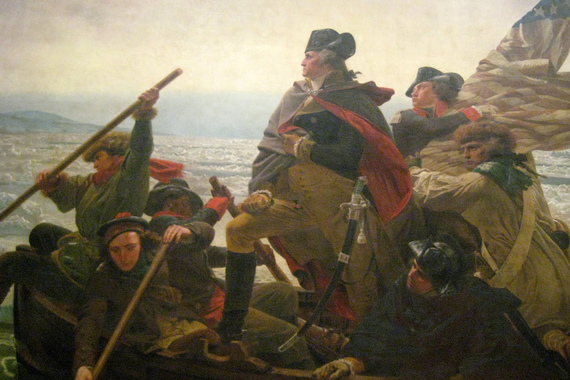What exactly makes someone a good leader? It's a tough question to answer, largely because there are very few personality traits that are universal to all of them. Think of Gandhi, Napoleon, George Washington and Martin Luther King, Jr. - undeniably four of the greatest leaders of all time, yet their personalities and communications styles could not have been more different.
What each of these leaders did have in common was the ability to connect with and motivate the masses. They were also able to bring disparate groups of people together to work in harmony and fight for their mission.
Those are the kind of results that anyone in a leadership role should strive for. If you don't, chances are you won't be in that role for long. The key to achieving that level of cohesiveness and effectiveness is to focus less on your own personality traits and more on those of the people you're leading, in order to bring out the best in them.
In the late 1970s NASA took this approach as it prepared for its space shuttle program. Using the Process Communication Model® (PCM), a behavioral communication training system, NASA was able to determine how each astronaut would communicate and behave under stressful situations - and whether or not they'd be able to work through them together regardless of the circumstances.
PCM identifies six personality types, each of which is motivated in unique ways and reacts to stressful situations very differently. Successful leaders need to be able to identify these traits and behaviors so that they can effectively communicate with each person, and help team members of all types come together to accomplish their shared goals.
Here are the four most common personality types, and how to best lead, communicate with and motivate each:
Organizers
Analytical, logical and goal-driven, Organizers back up their arguments with facts and figures and can get frustrated with people who don't think in the same logical manner. Planning is their superpower, and they fear losing control and looking incompetent, so it's important for leaders to empower them to make decisions and recognize the work that they do. Provide Organizers with assignments rooted in problem solving and project management to bring out their strengths.
Connectors
Think about the friendliest and warmest people in your office. There's a good chance they're Connectors. Relationships are their superpower: they strive to connect with others through empathy and compassion, and their goal is to achieve harmony and unity. In order to best lead and coach Connectors, it's important to connect with them on a personal level. They want to feel that you care about them and have their back. In distress, these people will often get quiet or self-deprecating, so it's important to recognize these behaviors and find out what's causing them.
Advisors
Dedicated, observant and conscientious, Advisors find information to support their beliefs and then form opinions. Commitment is their superpower, so if you want to motivate them, try to align tasks with their belief system. Emphasize where a task falls in the big picture and how important their help is. When things go wrong, Advisors can become self-righteous and judgmental of those who don't share their beliefs. Leaders need to be able to deescalate these situations by first showing respect for their opinions and then begin problem solving.
Originals
Spontaneous, creative and playful, Originals are often the idea people. Creativity is their superpower, however, they're not easily able to formulate a detailed business plan and step-by-step instructions. Leaders should look to Originals for creative ideas, but also challenge them to think realistically about the steps that it will take the see these ideas through. Originals want recognition, but not in the same deeply personal way Connectors do; they want to be seen as unique, one-of-a-kind -- different from everyone else. Take the time to brainstorm and bounce ideas off of Originals to show that you value their creativity.
The more you can encourage your team to reflect upon and share their communication preferences and thought processes, the easier it will be to build a strong team and in turn, effectively lead them. While history's great leaders had their own motivations and unique leadership styles which helped them gain influence, they were all able to inspire change by recognizing that their message should be delivered in a way that resonates with people of all personality types.
